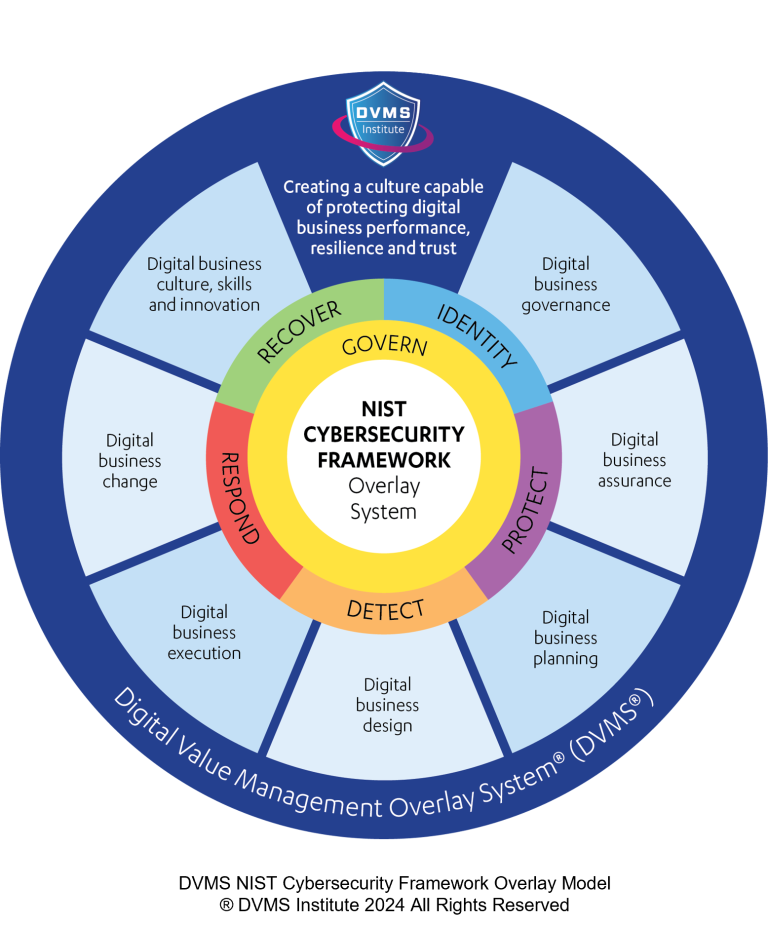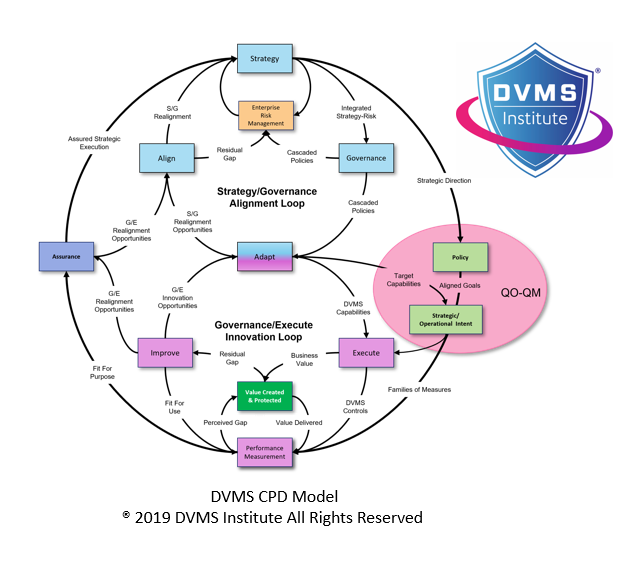The Interconnectedness of Cyber Risk and Cyber Resilience
Rick Lemieux – Co-Founder and Chief Product Officer of the DVMS Institute
Cyber risk and resilience have emerged as critical considerations for individuals and organizations. While they may seem distinct, these two terms are inextricably linked, forming a symbiotic relationship that shapes the landscape for protecting organizational digital value, resilience, and client trust.
Cyber risk, in essence, refers to the potential negative consequences or losses an organization or individual may experience due to a cyberattack or security breach. These consequences vary widely, from financial losses and reputational damage to operational disruptions and legal liabilities. The likelihood and severity of cyber risks are influenced by many factors, including the nature of the organizational activities, the sensitivity of its data, the effectiveness of its security measures, and the sophistication of the threat landscape.
The NIST Cybersecurity Framework (CSF) is a voluntary framework that helps organizations manage cybersecurity risks.
Cyber resilience, on the other hand, is the ability of an entity to anticipate, absorb, and recover from cyberattacks in a timely and effective manner. It encompasses a proactive approach to cybersecurity beyond merely protecting against threats. Cyber resilience involves a combination of strategies, including risk assessment and management, incident response planning, business continuity planning, security awareness training, technology controls, robust governance, and cultural change.
The Digital Value Management System® (DVMS®) from the DVMS Institute is a holistic approach to cyber resilience that enables organizations of any size, scale, or complexity to protect organizational digital value, resiliency, and client trust.
At the heart of the interconnectedness between cyber risk and cyber resilience lies the understanding that they are two sides of the same coin. Cyber risk represents the potential threats that an organization faces, while cyber resilience is the organizational capacity to mitigate those threats and minimize their impact on stakeholders. A robust cyber resilience posture is essential for effectively managing cyber risk.
One fundamental way cyber risk and cyber resilience are interconnected is through risk assessment. Organizations can prioritize their security efforts and allocate resources by identifying potential cyber risks and evaluating their likelihood and impact. A comprehensive risk assessment can also help to inform the development of effective cyber resilience strategies.
Technology controls, such as firewalls, intrusion detection systems, and encryption, protect systems and data from cyberattacks. However, it is essential to note that technology alone cannot guarantee cyber resilience. A combination of technical, procedural, and organizational measures is necessary to create a strong security posture.
Incident response planning is another critical aspect of cyber resilience closely tied to cyber risk. A well-developed incident response plan outlines the steps an organization should take during a cyberattack, including containment, eradication, recovery, and lessons learned. By having a clear and actionable plan, organizations can minimize the damage caused by cyberattacks and reduce their overall cyber risk exposure.
Business continuity planning is another essential component of cyber resilience. This involves developing strategies to ensure that critical business functions can continue to operate even in the face of disruptions caused by cyberattacks. By having a robust business continuity plan, organizations can protect their revenue streams, maintain customer relationships, and minimize the overall impact of cyber incidents.
Security awareness training is also crucial for building cyber resilience. Organizations can reduce the likelihood of human error and social engineering attacks by educating employees about cybersecurity best practices and the risks associated with common threats. A well-trained workforce is an asset in the fight against cybercrime.
Finally, robust governance and oversight are essential for effective cybersecurity management. Organizations can ensure that cybersecurity is a priority by establishing clear roles and responsibilities. A strong governance framework can also help promote accountability and transparency, which are critical for building stakeholder trust.
The interconnectedness of cyber risk and cyber resilience is a fundamental principle that organizations of all sizes must understand. Organizations can create a more secure and resilient digital environment by recognizing the importance of preventing cyberattacks and mitigating their impact.
About the Author

Rick Lemieux
Co-Founder and Chief Product Officer of the DVMS Institute
The DVMS Institute teaches organizations of any size, scale, or complexity an affordable approach to mitigating cyber risk to protect digital business performance, resilience, and trust.
Rick has 40+ years of passion and experience creating solutions to give organizations a competitive edge in their service markets. In 2015, Rick was identified as one of the top five IT Entrepreneurs in the State of Rhode Island by the TECH 10 awards for developing innovative training and mentoring solutions for boards, senior executives, and operational stakeholders.
® DVMS Institute 2024 All Rights Reserved




